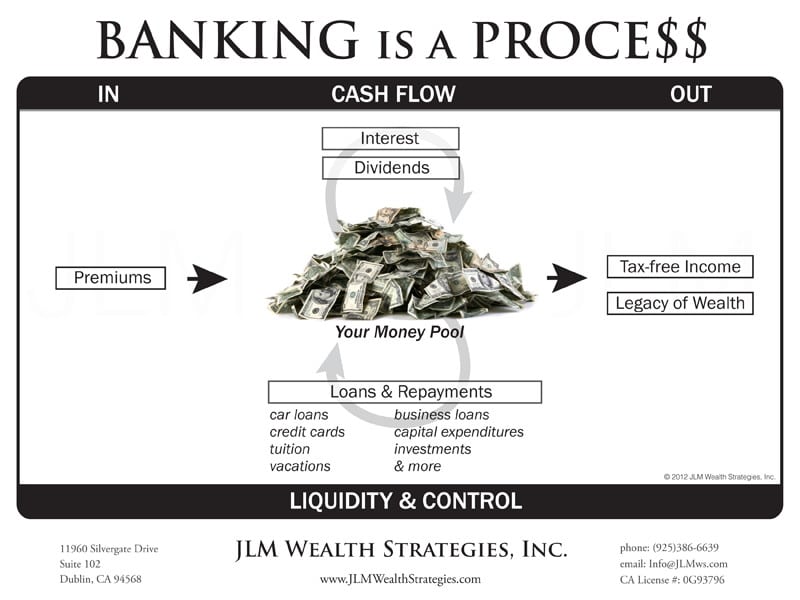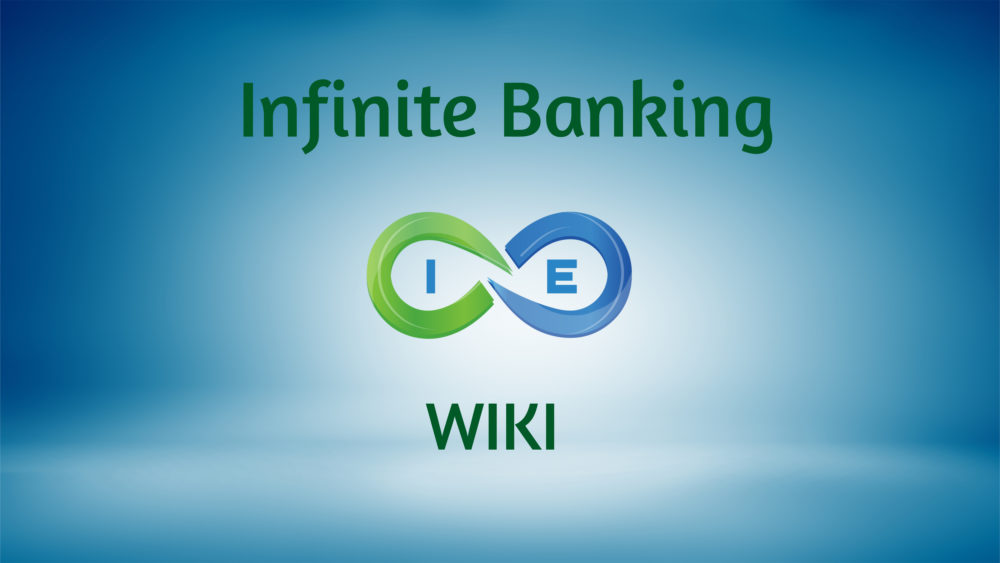All Categories
Featured
Table of Contents
Okay, to be reasonable you're truly "financial with an insurance coverage firm" rather than "financial on yourself", however that concept is not as very easy to sell. It's a little bit like the concept of purchasing a residence with cash, then obtaining against the house and placing the money to function in one more investment.
Some people like to chat about the "speed of money", which generally indicates the same thing. In truth, you are just taking full advantage of utilize, which functions, but, certainly, works both ways. Honestly, all of these terms are scams, as you will certainly see listed below. That does not indicate there is nothing beneficial to this principle once you get past the marketing.
The entire life insurance policy market is afflicted by excessively expensive insurance, substantial compensations, shady sales methods, low rates of return, and poorly informed clients and salespeople. If you want to "Bank on Yourself", you're going to have to wade into this sector and actually get entire life insurance. There is no alternative.
The guarantees inherent in this product are crucial to its feature. You can obtain versus many sorts of cash money value life insurance policy, however you should not "financial institution" with them. As you acquire a whole life insurance policy plan to "bank" with, keep in mind that this is a completely different area of your monetary plan from the life insurance area.
As you will certainly see below, your "Infinite Financial" plan truly is not going to reliably provide this essential economic feature. One more trouble with the truth that IB/BOY/LEAP counts, at its core, on a whole life plan is that it can make purchasing a policy bothersome for many of those interested in doing so.
Can You Create Your Own Bank
Dangerous leisure activities such as SCUBA diving, rock climbing, skydiving, or flying also do not blend well with life insurance coverage products. That might work out great, because the point of the policy is not the death benefit, however keep in mind that acquiring a plan on small children is more pricey than it needs to be because they are normally underwritten at a "standard" rate rather than a favored one.

A lot of plans are structured to do one of two things. The compensation on a whole life insurance policy is 50-110% of the initial year's premium. Often plans are structured to make the most of the fatality advantage for the costs paid.
With an IB/BOY/LEAP plan, your objective is not to optimize the fatality advantage per dollar in costs paid. Your goal is to make best use of the cash money value per dollar in costs paid. The price of return on the policy is very essential. One of the finest ways to take full advantage of that factor is to obtain as much money as feasible into the policy.
The ideal means to improve the rate of return of a plan is to have a relatively little "base policy", and after that put even more cash right into it with "paid-up enhancements". With even more cash in the plan, there is even more cash money worth left after the expenses of the death benefit are paid.
An added advantage of a paid-up addition over a regular costs is that the payment price is lower (like 3-4% as opposed to 50-110%) on paid-up enhancements than the base policy. The much less you pay in compensation, the higher your price of return. The price of return on your cash worth is still going to be adverse for a while, like all money worth insurance coverage plans.
A lot of insurance policy business only use "straight recognition" financings. With a straight acknowledgment funding, if you obtain out $50K, the reward price applied to the cash value each year only applies to the $150K left in the plan.
Life Insurance Banking
With a non-direct recognition lending, the business still pays the very same reward, whether you have actually "obtained the cash out" (practically versus) the policy or otherwise. Crazy? Why would they do that? Who understands? Yet they do. Usually this attribute is paired with some less beneficial element of the plan, such as a lower dividend rate than you might obtain from a plan with direct acknowledgment financings (whole life insurance as a bank).
The business do not have a resource of magic free cash, so what they give in one area in the policy must be taken from an additional location. If it is taken from an attribute you care less around and place into a function you care more around, that is a good point for you.
There is another important feature, typically called "wash car loans". While it is great to still have actually dividends paid on money you have actually taken out of the policy, you still need to pay rate of interest on that particular lending. If the reward rate is 4% and the car loan is billing 8%, you're not specifically coming out ahead.
With a clean finance, your lending rates of interest coincides as the reward price on the policy. So while you are paying 5% interest on the finance, that passion is completely offset by the 5% dividend on the loan. In that regard, it acts just like you took out the money from a bank account.

5%-5% = 0%-0%. Same very same. Therefore, you are now "banking on yourself." Without all three of these variables, this policy simply is not going to function very well for IB/BOY/LEAP. The most significant problem with IB/BOY/LEAP is individuals pressing it. Almost all of them stand to benefit from you purchasing right into this concept.
Actually, there are many insurance coverage representatives discussing IB/BOY/LEAP as a feature of entire life who are not actually marketing policies with the needed functions to do it! The problem is that those who understand the concept best have a large dispute of passion and normally pump up the benefits of the concept (and the underlying policy).
Cipher Bioshock Infinite Bank
You should contrast borrowing versus your policy to taking out cash from your savings account. No cash in money value life insurance. You can place the money in the financial institution, you can spend it, or you can buy an IB/BOY/LEAP plan.
It grows as the account pays passion. You pay taxes on the interest annually. When it comes time to purchase the boat, you withdraw the cash and acquire the watercraft. You can conserve some more money and placed it back in the financial account to begin to earn interest once more.
It expands for many years with resources gains, returns, leas, and so on. Some of that earnings is taxed as you accompany. When it comes time to acquire the watercraft, you market the financial investment and pay tax obligations on your long term capital gains. You can save some even more money and buy some even more financial investments.
The cash money value not used to pay for insurance and commissions grows throughout the years at the returns price without tax drag. It begins with adverse returns, however hopefully by year 5 approximately has damaged also and is growing at the dividend price. When you most likely to purchase the boat, you borrow versus the policy tax-free.
Infinite Banking Uk
As you pay it back, the cash you repaid begins expanding once more at the dividend rate. Those all work rather likewise and you can contrast the after-tax rates of return. The 4th alternative, nonetheless, functions very in different ways. You do not save any kind of cash neither get any type of type of investment for several years.
They run your credit and offer you a financing. You pay rate of interest on the borrowed money to the bank till the lending is settled. When it is paid off, you have an almost useless watercraft and no cash. As you can see, that is not anything like the initial 3 choices.
Latest Posts
Infinite Bank
Infinite Banking Software
Be Your Own Bank With Life Insurance